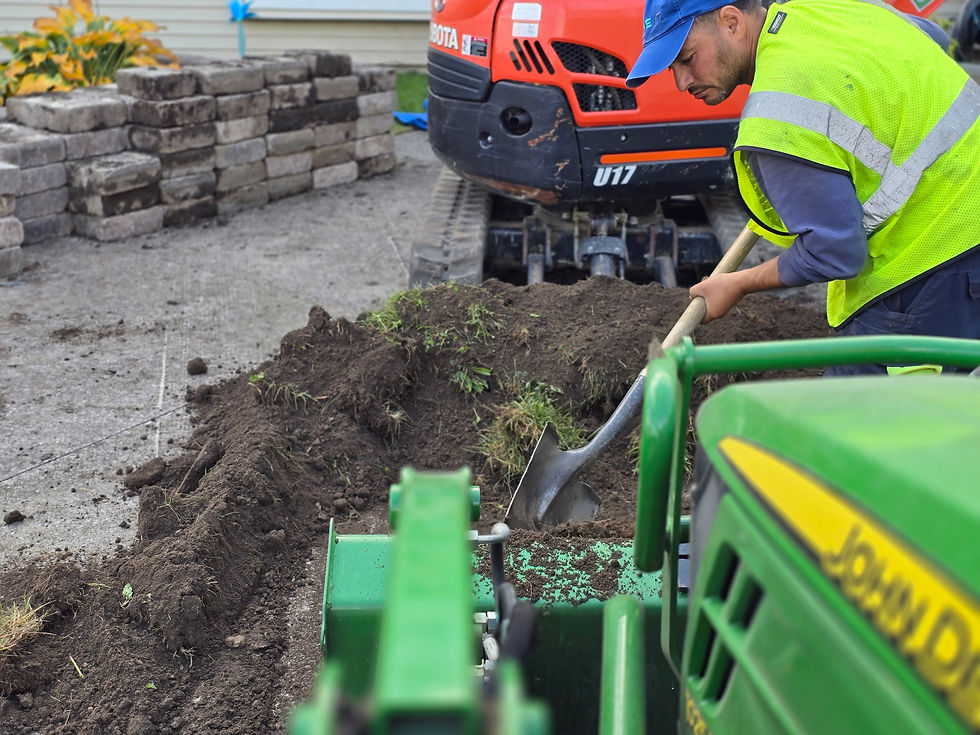Rolling Out the Truth: Why Lawn Rolling Does More Harm Than Good
- Lawn Guru
- Mar 14, 2024
- 2 min read

Rolling your lawn might seem like a quick fix to even out bumps and make your garden look manicured, but it can actually do more harm than good. In this blog post, we'll explore the reasons why lawn rolling is generally discouraged by gardening experts and the potential long-term damage it can cause to your green space.
Compaction Kills
The primary issue with rolling your lawn is soil compaction. When you roll a lawn, you're essentially pressing down on the soil, squeezing out the air pockets between the soil particles. These air pockets are crucial for root growth, water drainage, and microbial activity. Compacted soil makes it difficult for roots to expand, leading to weaker, less resilient plants. Over time, this can lead to a lawn that's more susceptible to drought, disease, and pest infestations.
Water Woes
Compacted soil also has poor drainage. Water can't infiltrate compacted soil effectively, leading to runoff and potential flooding in your garden. This not only wastes water but can also carry away valuable topsoil and nutrients. In contrast, a well-aerated lawn will absorb rainwater more efficiently, reducing the need for supplemental watering and protecting the local water table.
Thwarting Thatch
Thatch is a layer of dead and living organic matter that accumulates between the green vegetation and the soil surface. While a thin layer of thatch can be beneficial, acting as a mulch, too much thatch can prevent water, nutrients, and air from reaching the soil. Rolling your lawn can contribute to thatch buildup by compressing the grass and soil, making it harder for natural decomposition to occur.
Microbial Mayhem
The soil is teeming with life, from beneficial bacteria and fungi to earthworms and insects. These organisms play a crucial role in nutrient cycling, organic matter decomposition, and soil structure maintenance. Compaction from lawn rolling can crush these helpful organisms, disrupting the delicate ecosystem beneath your feet and leading to a less healthy lawn.
Alternatives to Rolling
If you're dealing with an uneven lawn, there are better approaches than rolling. Aeration is a process that involves creating small holes in the soil to allow air, water, and nutrients to penetrate deeper. This can relieve compaction and promote healthier root growth. Topdressing with a thin layer of compost or sand can also help to even out small bumps and depressions over time, without the negative effects of rolling.
In severe cases where the lawn is extremely uneven or damaged, it may be necessary to consider more drastic measures like regrading or relaying the turf. However, these options should be seen as last resorts and undertaken with careful planning and consideration for the long-term health of your lawn and garden ecosystem.
Conclusion
While rolling your lawn might provide a temporary aesthetic improvement, the long-term consequences can be detrimental to the health and vitality of your lawn. By opting for more gentle and sustainable lawn care practices like aeration and topdressing, you can achieve a beautiful, healthy green space that's good for the environment and enjoyable for years to come. Remember, a healthy lawn is not just about how it looks on the surface, but about fostering a vibrant ecosystem beneath.
Contact Windsor Topdressing - www.windsortopdressing.ca or 519-916-0397 for assistance with your lawn.







Rolling may seem like a quick fix, but it can seriously harm your lawn's health in the long run. By compacting the soil, it reduces root growth and water absorption, leading to a weak, stressed lawn. Instead, opt for aeration or topdressing to maintain a vibrant, thriving lawn that’s built to last.